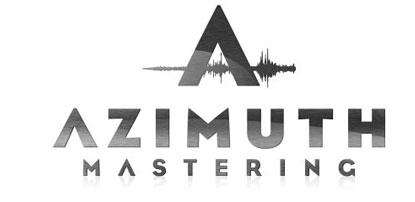Helpful Resources
This page is a bit of an extension of the FAQ, but it's dedicated to providing information about questions we receive on a regular basis that aren't directly related to the mastering process, but are still quite important to artists in the process of producing an album.
CD-Text, Gracenote, and ID3 Tags
We get quite a lot of questions related to how albums and songs are labeled/identified by iTunes, car stereos, and other players and formats. There are 3 different ways that this data is handled, and each will be outlined below.
CD-Text
CD-Text is artist, album, and track title information that is stored directly on a CD itself. It must be embedded when the CD is burned, and it is most commonly utilized by car stereos and stand-alone CD and stereo units. All master CDs burned at Azimuth with the intention of release on CD will have CD-Text written to the discs at no extra charge. CD-Text is NOT read by iTunes, which leads into our next topic...
Gracenote
When you insert a CD into iTunes, the artist, album, and track names (as well as genre, year, and other information)
are often pulled up for you automatically. This data is not read from CD-Text, but from a database called Gracenote.
Gracenote is an online repository of CD profiles used by many popular kinds of audio software. It is maintained entirely
by user submissions (much like Wikipedia) and once an album is catalogued in the Gracenote database, its track information
will show up automatically for all users who insert a copy of that CD into their computer and open it in iTunes.
Submitting your CD information to iTunes is quite simple.
- After receiving your master CD, insert it into your CD drive and open iTunes.
- Click on the CD from the left-side menu.
- Enter your artist, album, song titles, and genre for each of your tracks.
- When you're done, just open the Advanced menu and choose Submit CD track names.
- That's it! Your disc profile has now been submitted to the Gracenote database.
Note: If another CD already exists in the Gracenote database that has the same number of tracks as your CD with similar track lengths, iTunes may automatically label your songs with the Gracenote information for another artist's CD.
But don't worry, you can just change the titles to fit your CD and submit them. Gracenote will store both sets of information and will prompt users to choose which CD is the correct match when they put your album into their iTunes.
ID3 Tags
The first two topics in this section deal with reading track information from CDs, but ID3 tags are how song information is stored in individual digital tracks, such as MP3 or M4A files. If you want to upload your tracks to a website for distribution or just want to send copies of your MP3s to friends and you want the track information to be stored in them, just set the ID3 tags. All you need to do is open your songs in iTunes (on your drive, not on the CD), right-click on a track (or multiple tracks) and choose Get Info. Choose the Info tab on the window that pops up, and you can set whatever info you'd like about your songs.
Extracting your songs from a CD
Over 90% of our clients send us their songs for mastering via some form of digital transfer (FTP, file hosting services, etc).
It's easy, reliable, and by far the fastest way to get your master underway. A common question we receive is about how to extract
CD into WAV or AIFF format to be sent for mastering.
The simplest way is typically by using iTunes with the procedure outlined here:
- Open iTunes.
- Open the Edit menu and choose Preferences.
- On the General tab, click the button that says Import Settings.
- Select "WAV Encoder" from the dropdown menu labeled Import Using.
- Click on the Advanced tab and make note of the path specified as your iTunes Music folder location. When you extract your files, they will be stored in this path under a folder with the artist name.
- Click OK to close the Preferences window.
- Insert your CD. should may automatically ask you if you would like to import the songs. Choose Yes and the extraction will start.
- When the import's finished, you'll find the WAV files in the path noted in step 5.
- When you're done, don't forget to return to Import Settings and change back your encoder to AAC or MP3 so you don't keep importing all your albums as WAV files, or you'll find yourself running out of drive space quickly!

